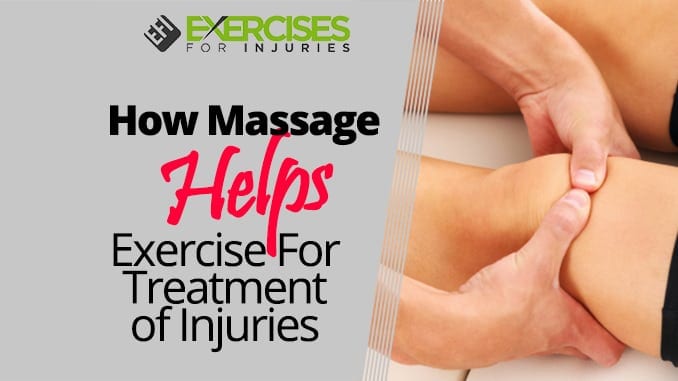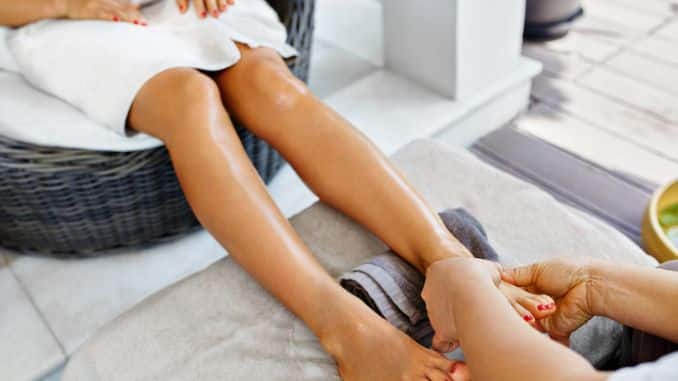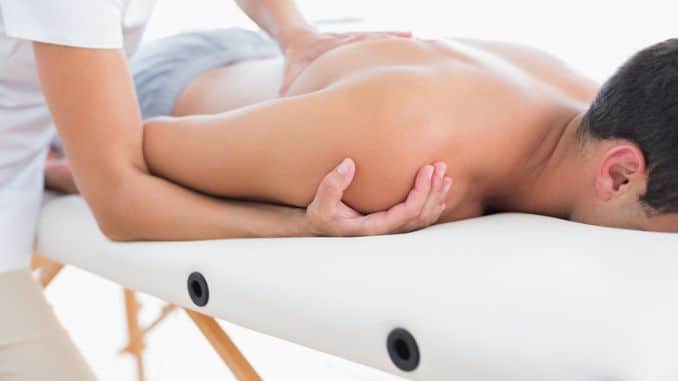
Any time someone supports an injury, it naturally goes through three stages of tissue healing. In general, massage helps exercise effectively treats many injuries in conjunction with exercise rehabilitation.
Massage therapists take a corrective exercise course during their study of massage therapy. This is great as it helps them work with fitness and strength training professionals.
I will look at the benefits massage therapy provides for exercise for each stage of tissue healing.
As a reminder, here are the three phases of tissue healing:
- Acute (inflammatory reaction/protection phase)
- Sub Acute (repair and modeling/controlled motion)
- Chronic (maturation and remodeling/return to function).
The key here is to understand what is happening at the cellular level to provide the proper massage techniques followed by the appropriate exercise.
Acute Stage – #1
In the acute phase, the inflammatory reaction occurs. This stage’s typical signs and symptoms may be remembered by the acronym S.H.A.R.P. This stands for swelling, heat, altered function, redness, and pain.

On a practical level, there is pain before tissue resistance. This usually occurs at the beginning of the range of motion. Your client does not want to move that injured area at all. And if they do, it will be minimal.
The most common approach at this stage is RICE:
- rest
- ice
- compression
- elevation
Massage therapy helps maintain and increase blood and lymph circulation, thereby lowering the amount of swelling. This allows for clearing the waste products caused by the inflammatory process.
Massage will also help reduce the tension in any compensating muscles in that area or on the opposite limb. This makes it easier for you to give exercises in the acute stage. Furthermore, massage therapy provides a psychological boost to the tissue healing process.
You can perform pain-free passive range of motion and muscle setting or low-intensity isometric resistance exercises to help maintain your current range of motion and strength.
Pain-free grade one or two cooperative play may be performed as well. This is important because you want to maintain the movement between joints to allow a full range of motion later in the healing process.
As a friendly reminder, caution must be taken to avoid sharp pain, which means tissue damage. The last thing you need is for your client to have a longer than anticipated recovery from injury.
Sub Acute Stage – #2
The next stage is the repair and healing stage. The key in this stage is to promote healing and develop a mobile scar. As there is collagen formation, the tissue is fragile and easily injured.
Massage therapy effectively promotes circulation to the affected area and has the appropriate nutrients for tissue healing. Massage is also helpful in compensating muscles, a growing range of motion, and easing pain.
Again massage is effective for treating the areas above and below the injury. Massage prepares the muscles in this stage for open and closed chain exercises and muscular endurance exercises.
These exercises can progress in passion and range. Again both range of motion and resistance exercises must be done pain-free.
Cooperative play is effective for working within a pain-free range. It is important to remember that if the joint is “stuck,” building strength through a full range will be brutal, and you will also be setting your client up for another injury.
If the message and the practice are too aggressive, your client may end up in the inflammatory stage. In this stage, pain co-occurs with tissue resistance. It is also a “grey” area for treatment and exercise.

I draw the line with sharp pain. It is acceptable for your clients to work with a bit of discomfort. If the massage and exercise are inadequate, there will be an increase in misaligned scar tissue leading to a decrease in range of motion and delay in tissue healing.
Pain-free Massage
Generally, any type of massage technique must be pain-free. The massage treatment depends on the communication between the client and therapist.
You can start with submaximal multi-angle resistance isolation exercises, assisted range of motion, and progress to total body resistance exercises and self-stretches.
Simple static proprioceptive and balance exercises may be included in this stage, leading to more dynamic and functionally integrated practices towards the end and finally leading to a return to function.
Chronic Stage – #3
Next, connective tissue maturation, contracture of scar tissue, and scar remodeling occur in the chronic or return to function stage. Massage is highly beneficial both before and after exercise.
Generally, inflammation is absent, and pain occurs after resistance. Massage therapy is an effective tool to help the individual reach full range of motion. Massage prepares the body for any intense rehab/training.
The massage therapy techniques tend to be deeper and more aggressive at this stage in the tissue healing process. Techniques such as transverse friction, grade 3 or 4 cooperative play, muscle stripping, and myofascial release use tissue quality to prepare for more comprehensive exercises for tissue healing.

These techniques help align collagen fibers, develop functional independence, and improve tissue quality. Pre-exercise massage may be included as part of the warm-up. Resistance exercises progress from submaximal multi-angle isometrics to concentric, eccentric, and plyometric.
Total body, functional, or activity-related exercises are appropriate in this injury recovery phase. Post-exercise massage is effective for recovery. I would recommend post-massage one to two hours post-exercise.
The benefits of post-massage are:
- Improved circulation
- Muscular relaxation
- Separation of muscle from connective tissue
- Formation of healthy scar tissue and connective tissue normalization
- Deactivation of trigger points
In closing, injuries go through three stages of tissue healing, in which a combination of massage and exercise is highly beneficial for a quick recovery.
Treatment and exercises start with isolation and gradually progress from the total body or functional integration.
As a fitness or strength training professional, it is always great to have contacts in massage therapy as your clients, and you can benefit personally and professionally.

Mike Grafstein B.Ph.Ed, CAT©, RMT
Mike has certification as an Athletic Therapist in Canada and registration as a Massage Therapist in Ontario.
He has held the position of Head Therapist for the Ontario Soccer Association, Soccer Academy Alliance of Canada (S.A.A.C.), and Bryst International. He has traveled internationally with soccer performing treatments in many different foreign settings.
Currently, he is a senior instructor and clinic supervisor at Bryan College – North York Campus faculty of Massage Therapy and Hydrotherapy, where he teaches physiology and remedial exercise. He practices massage therapy at Upper Canada Sports Medicine in Newmarket, Ontario.

